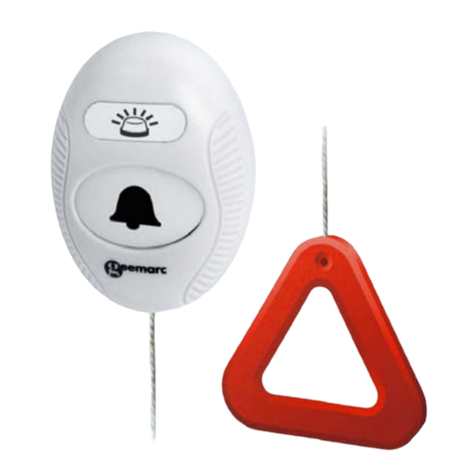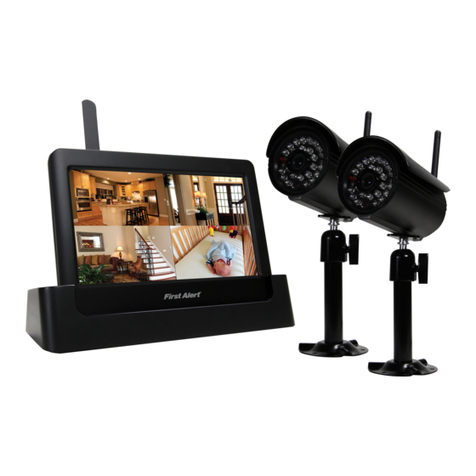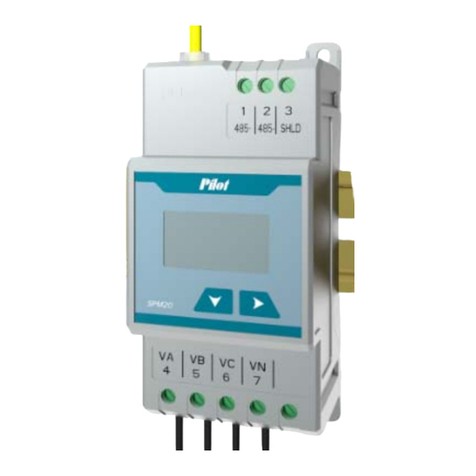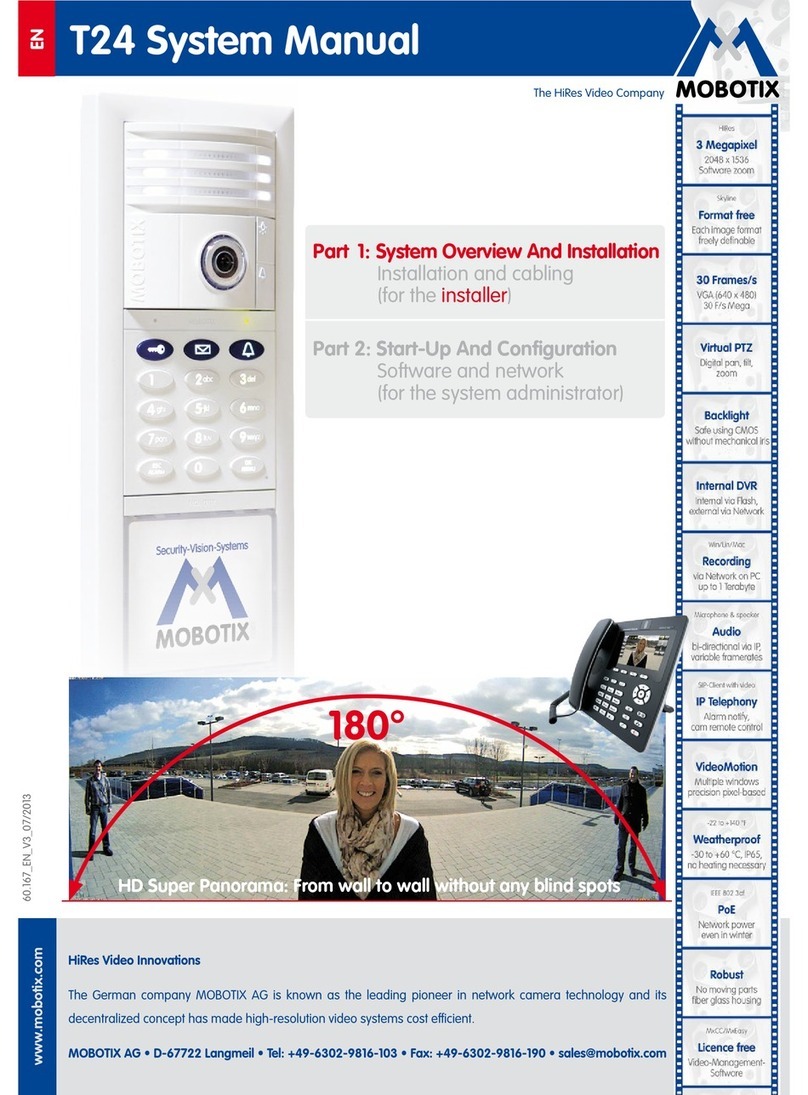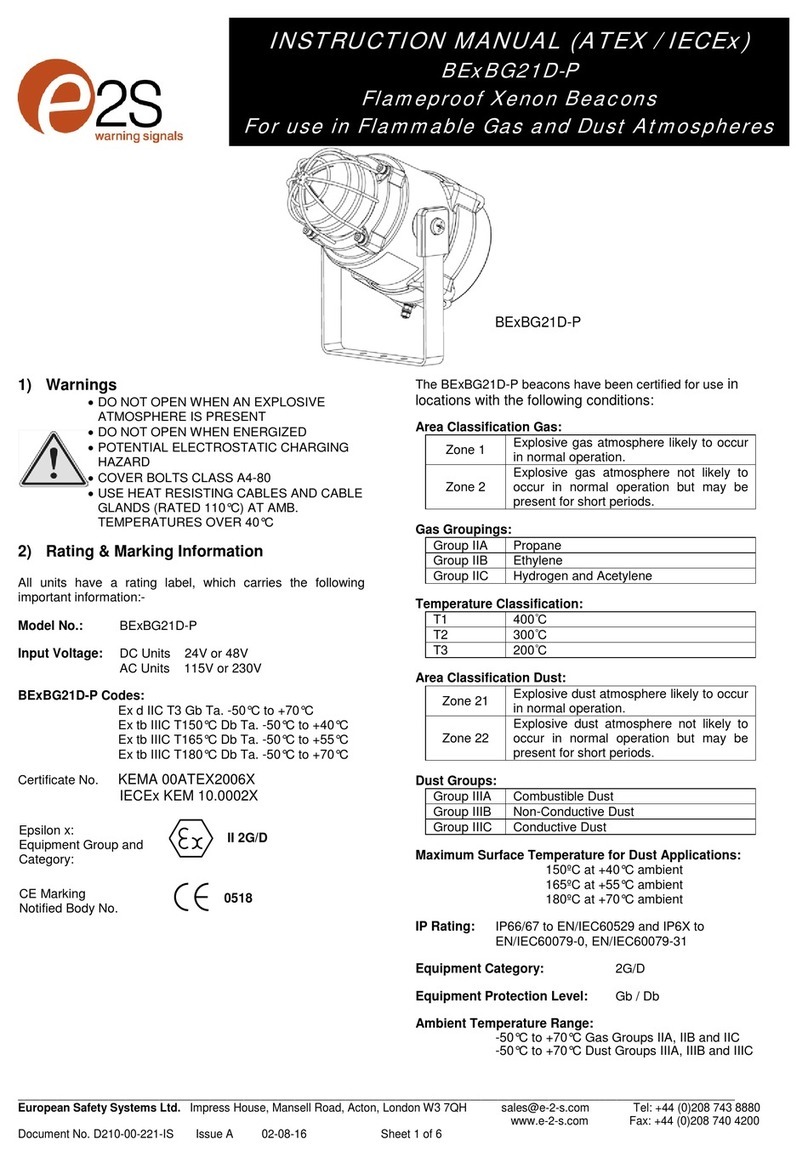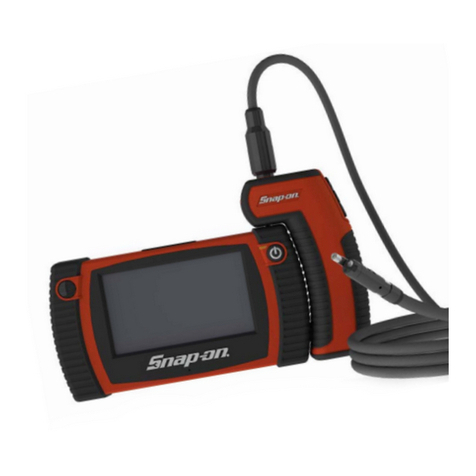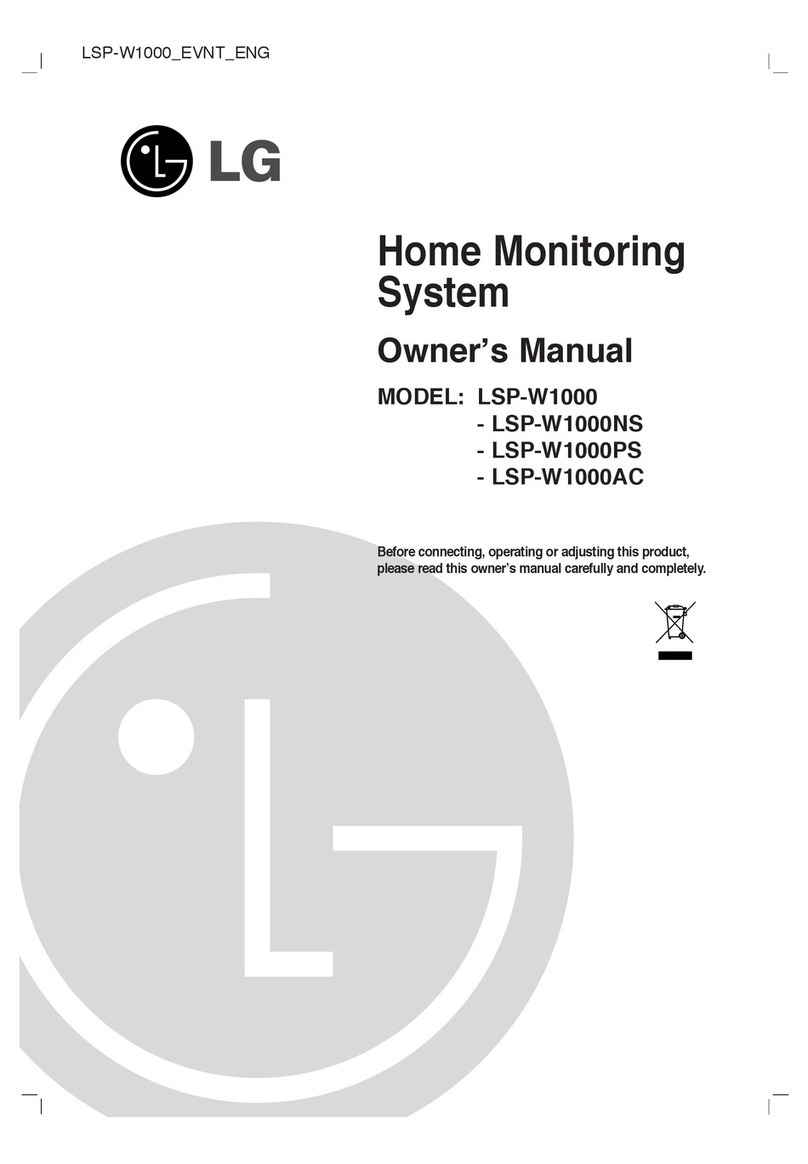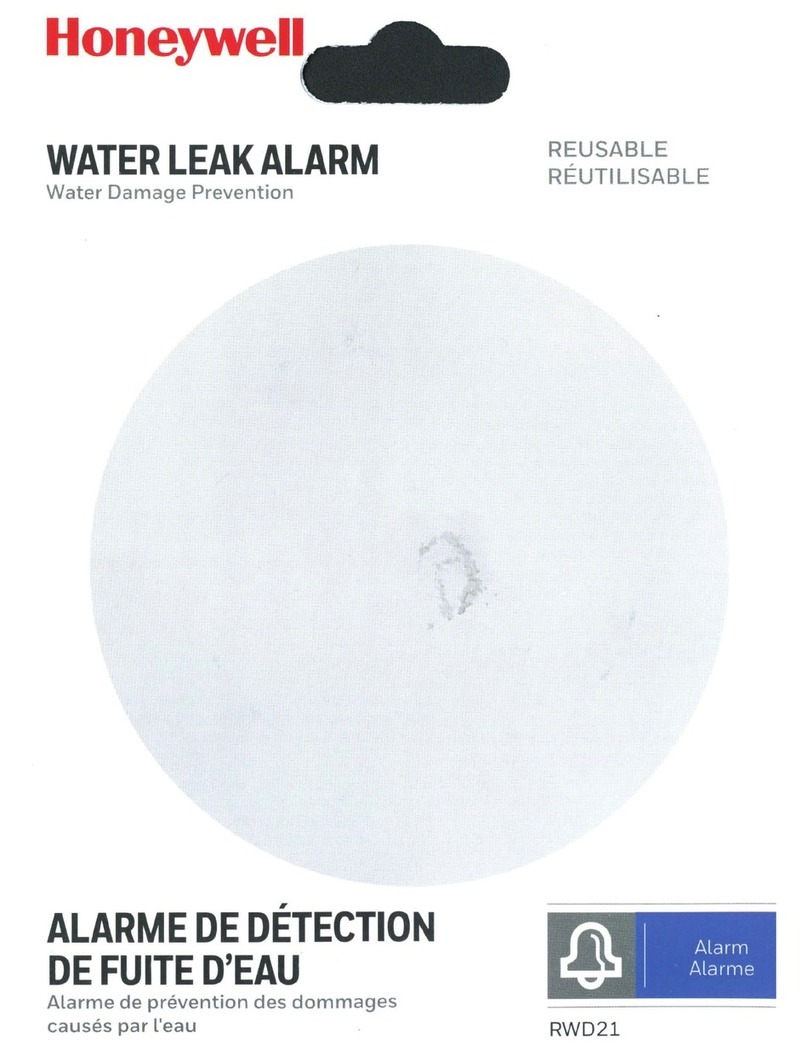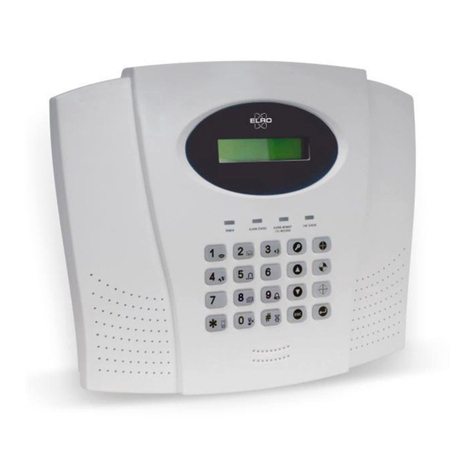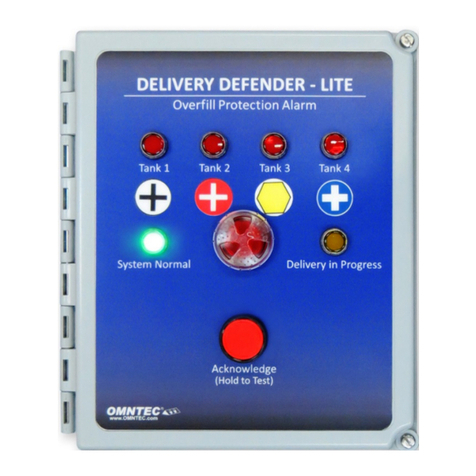Global Access CW-SYS User manual

CW-SYS WIRELESS DRIVEWAY SYSTEM INSTRUCTIONS
1. WHAT’S IN THE BOX
and on product box. When calling to talk about your product, please have one
of these numbers handy.
PRODUCT
CODE
YEAR
MADE
SERIAL
NUMBER
2. SERIAL NUMBER
1. SENSOR “PUCK”
2. INTEGRATOR
3. AUGER SCREWS (2)
4. CR123A BATTERIES WITH
BATTERY CLIPS (2)
5. 3’ (1 m.) COAXIAL CABLE
6. TERMINAL BLOCK
SCREWDRIVER
3. INSTALLING BATTERIES/LOW BATTERY
1. Use CR123A
4. PAIRING
YOUR SYSTEM HAS BEEN PAIRED AT FACTORY.
THESE DIRECTIONS APPLY WHEN PAIRING
ADDITIONAL UNITS
6. TESTING RANGE
Your system has a radio range of at least 350 feet or over 1000’ line-of- sight.
Radio range depends on several variables:
How the puck is installed (in ground or above ground on post)
Obstacles blocking radio signal, such as soil, trees, foilage,
buildings, concrete, etc.
To test range:
3. Put sensor in test range mode (see #5 above).
4. Listen for Integrator to trigger. If it doesn’t, move sensor closer to Integrator.
5. Be sure to test again with puck installed in ground (see #8 below).
6. You may need to add a repeater inside the home (see #9 below).
5. TEST MODE FOR SENSOR PUCK
radio signal range (see #6 below).
2. The red LED will blink every second when in test mode
3. There will be an immediate transmission
8. INSTALLING SENSOR PUCK
WARNING: SCREW HOLES IN PUCK WILL STRIP. DO NOT OVERTIGHTEN WITH
SCREW GUN OR TAKE IN & OUT REPEATEDLY.
IF SCREWS ARE STRIPPED,
PURCHASE LONGER STAINLESS STEEL SCREWS, SUITABLE FOR PLASTIC.
The sensor puck can be installed in the driveway, in the ground or on an
immovable object (post, tree, etc.).
ON AN OBJECT
1. When range has been tested (see #6 above), seat lid securely on puck with
screws provided. Be careful not to strip screws with screw gun. There should be
no gap between lid and puck.
2. Find a tree, post, or other object directly beside the driveway.
3. Make sure the object is IMMOVABLE or false alarms will occur.
IN THE GROUND
1. When range has been tested (see #6 above), seat lid securely on puck with
screws provided. Be careful not to strip screws with screw gun. There should be
no gap between lid and puck.
2. Find a spot directly beside driveway.
3. Dig a hole big enough for puck and auger screws, allowing puck’s lid to be
level with surface of dirt.
If you fail to secure puck, lawn mowers, etc. will pull/suck it up.
5. Pack and tamp dirt around puck, ensuring lid is clean of dirt and all debris.
IN THE DRIVEWAY
1. When range has been tested (see #6 above), seat lid securely on puck with
screws provided. Be careful not to strip screws with screw gun. There should be
no gap between lid and puck.
2. Use a 4.5"diameter masonry hole saw to bore a hole for puck. Bore at least
2.75” deep so puck lid will be 1/4"below driveway surface (so it can’t be pulled
up by snow plows, graters, etc.).
7. SETTING SENSITIVITY
ONLY ADJUST (LOWER) SENSITIVITY IF PUTTING IN MIDDLE OF
DRIVEWAY (see #8 below). IN ALL OTHER CASES USE DEFAULT.
SENSITIVITY ADJUSTMENT
HIGH (Default)
Detects vehicle going
5 MPH 12-14’ away
1 & 2 in OFF position
MEDIUM
Detects vehicle going
5 MPH 6-8’ away
1 ON & 2 OFF position
LOW
Detects vehicle going
5 MPH 2-4’ away
1 & 2 in ON position 12
ON
12
ON
12
ON
NOTE: DIP SWITCH
COLOR MAY VARY
2. Push pairi
(will stay in pairing mode 30 minutes).
3. Power down
& power up
sensor by un-
installing and
re-installing
(see #3 above).
4.
when paired and exit pairing mode
You can pair up to 10 pucks with unlimited number of Integrators
1. Bring sensor close to Integrator and
power up Integrator (see #10 below).
ON AN OBJECT IN THE GROUND IN THE DRIVEWAY
1
2
3
4
5
6
IA
OPTIONAL
• 12VDC power
(Part #CW-PSU)
supply
LOOP
SEALANT
1/4"
Don’t allow
sealant to
touch lid
or bosses
Fill line
Use 4.5” masonry hole saw
Pour
sealant
in hole,
then
install
puck.
Do not
cover
lid or
bosses
with
sealant.
• Put logo parallel to drive
• Put just below surface
• Auger screws secure puck
• Do not cover puck lid
• Pack dirt/grass around
puck
• Keep puck lid clean
min.
6"- 8"
• Use stable
object
• Use 4 deck
screws for
fastening
Bore hole
4.5" x 2.75" deep
WARNING: KEEP LID FREE OF DIRT, GRASS, SNOW, & ALL DEBRIS AT ALL TIMES TO ALLOW RADIO SIGNAL TO TRANSMIT!
Pairing
LOW BATTERY
in sensor, Integrator will “chirp”
and its LED will blink RED.
When hooked to external
system’s zone inputs (see #10
below), program what you desire
NOTE: HIGHEST SENSITIVITY IS WITH
DIP SWITCHES IN THE OFF POSITION
VERSION 1
to put in
to put in
test mode
test mode
REPLACE BOTH BATTERIES.
DO NOT USE RECHARGEABLES.
INFREEEXITINSTALLATIONS,IF ANIMALSOR PEOPLESTEPON SENSOR
PUCK INSTALLED IN THE GROUND, IT MAY TRIGGER THE GATE TO
OPEN. CONSIDER INSTALLING ON POST OR IN DRIVEWAY INSTEAD.
W I N N E R
WINNER

CONSUMER: Contact your installer.
INSTALLER: CALL BEFORE DIGGING UP OR UNINSTALLING
DISTRIBUTOR
1) as phone number.
9. INTEGRATOR DIP SWITCHES
Dip switches control sounder and repeater mode on Integrator.
SOUNDER
Turn dip switch 1 ON to turn sounder on.
REPEATER MODE
Turn dip switch 2 ON to turn Integrator into a repeater. In repeater mode,
the Integrator installed in the home (see #11 below). Red and blue LED will
10. INSTALLING INTEGRATOR
11. REPEATER MODE
To increase radio range, it may be necessary to make the Integrator a repeater.
If the signal from sensor puck is not reaching the Integrator:
1. Move the sensor closer to the Integrator, and/or
2. Install a repeater in the home between the sensor puck and Integrator
2. Remove enclosure cover by carefully pushing side tabs in.
3. Connect power supply to terminals 1 & 2 (no polarity).
4. Turn dip switch 2 ON (see #9 above). This puts the unit in repeater
mode. The red and blue LEDs will alternately blink to indicate repeater mode. It
the Integrator installed beside the main system.
5. Install repeater in a window closest to the sensor puck.
NOTE: To order repeater kit, use product code CW-REP.
void the user’s authority to operate the equipment.
NOTE: This equipment has been tested and found to comply with the limits for a Class B digital
device, pursuant to Part 15 of the FCC Rules. These limits are designed to provide reasonable
uses and can radiate radio frequency energy and, if not installed and used in accordance with
interference by one or more of the following measures:
Reorient or relocate the receiving antenna.
Consult the dealer or an experienced radio/TV technician for help.
To maintain compliance with FCC’s RF Exposure guidelines, This equipment should be installed
and operated with minimum distance between 20cm the radiator your body: Use only the
supplied antenna.
This device complies with Industry Canada licence-exempt RSS
interference; (2) this device must accept any interference, including interference that may cause
This Class [B] digital apparatus complies with Canadian ICE-003.
Le présent appareil est conforme aux CNR d’Industrie Canada applicables aux appareils radio
Cet appareil numérique de la classe [B] est conforme à la norme NMB-003 du Canada.
est de 20 cm.
The device has been evaluated portable device RF exposure requirements. The device is kept
at least 5 mm away from the user’s body.
TO LOW
BATTERY
INPUTS
IF N.O.
TO LOW
BATTERY
INPUTS
IF N.C.
TO ZONE
INPUTS or
WIRELESS
SWITCH
IF N.O.
TO ZONE
INPUTS or
WIRELESS
SWITCH
IF N.C.
POWER +
POWER -
LOW BATTERY
N.C. N.O.COM
ALARM RELAY
N.O.COMN.C.
(No Polarity)
POWER
DO NOT USE
TO EXIT
TERMINALS
IF N.O.
TO EXIT
TEMINALS
IF N.C.
POWER +
POWER -
N.C. N.O.COM
LOW BATTERY
N.O.COMN.C.
ALARM
(No Polarity)
POWER
DUAL EXIT TERMINAL
Your system integrates seamlessly with any security/H.A. system or electric
gate operator. NOTE: DO NOT USE WITH SOLAR GATES.
DO NOT USE
TO “EXIT”
or “OPEN”
TERMINAL
TO “GND”
or “COM”
(use one)
POWER +
N.C. N.O.COM
LOW BATTERY
N.O.COMN.C.
ALARM
(No Polarity)
POWER
S
IN
G
LE EXIT TERMINAL
Technical Specifications
Sensor “Puck” Integrator
Power Required 2 - CR123A batteries (6 V) 8-24VAC; 8-28VDC
Stand-By Current 22 Microamps (μA) 25 Milliamps (mA)
Alarm Current 130 Milliamps (mA) 40-80 Milliamps (mA)
Relay Time 2 seconds
Relay Contacts SPDT, N.O. or N.C. (Form C)
Relay Contact
Rating 2 amp/24 VDC (1 mA at
5 VDC min. load)
Radio Range
Tested above ground, no obstructions, up to 2,500 ft. *
Tested flush with ground, no obstructions, up to 1,000 ft. *
Use optional Repeater (CW-REP) to increase radio range
Battery Life 1-3 years*
Enclosure Rating IP68
Strength Rating 9.39 ton-force (8514 kgf) –
Temperature Range -25° F. +140° F.
(-32° C. 60° C.)
Dimensions 4.5 "dia. x 2.5 "H
(11.43 cm x 6.35 cm)
3.25 "L x 2 "H x .875 " D
(8.25 cm x 5.08 cm x 2.22 cm)
Weight 2 lbs. (.90 kg) 1 lb. (.45 kg)
*
Integrator uses 8-24 VAC or 8-30
VDC. Use security/H.A. system or
gate operator to power or use any
12VDC power supply.
W
A
R
R
A
N
T
Y
W
A
R
R
A
N
T
Y
W
A
R
R
A
N
T
Y
Y
E
A
R
14. FIVE YEAR WARRANTY
13. RETURNING MERCHANDISE
12. OPTIONAL EXTERNAL GATE ANTENNA
sealed metal gate
operator that blocks the RF signal. If that is the case, use the included coaxial
cable and install antenna externally, per the following:
1. Drill 1/4”
hole in gate
operator.
2. Put female end of cable
through hole and use nut to
sure rubber gasket stays on
outside between operator
and washer.
3. Screw antenna on male
end of cable outside operator.
WARNING: DO NOT SHIP BATTERIES WHEN RETURNING PRODUCT TO SUPPLIER.
NOTE: DIP SWITCH
COLOR MAY VARY
#1 Sounder
mode ON
#2 Repeater
mode ON
2.
th
e
4. Screw male end of cable to
Integrator antenna connector.
WARNING: This product can expose
you to chemicals including Acrylonitrile,
which is know to the State of California
to cause cancer. For more information,
go to www.P65Warnings.ca.gov.
AUTOMATIC GATE OPERATORS
15. FCC WARNING
SECURITY/HOME AUTO SYSTEMS
YOU MUST ADD A SAFETY TO GATE
WHEN USING CW-SYS FOR FREE EXIT.
E3957
AUSTRALIA
FCC ID #: 2AUXCCWIN & 2AUXCCWSN (U.S.)
IC#: 25651-CWIN & 25651-CWSN (Canada)
www.global-access.com.au
1300 366 046
